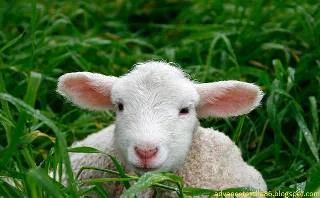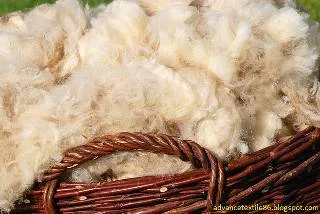Sheep wool fibers
Sheep wool fiber is another common type of textile fiber that is used in traditional fiber
products. It is usually more expensive than cotton and in a more limited supply
as it comes mainly from sheep wool. As an animal fiber, the main component of
wool is a protein that contains a polypeptide chain with a side chain of amino
acids. Keratin has a helical chain structure with strong hydrogen bonds. The
surface of the fiber has a very unique surface morphology characterized by
overlapping scales extending from the cuticle to the length. These scales
provide a differential frictional effect so that there is a relatively high
amount of friction against the fibers in the direction of the fibers. Wool fibers can range from 10-30 micrometers and the length of the fiber can be fine
from 1 to 3 inches. Thick wool fibers can be very stiff, creating irritation
and a shivering effect when projected from the fabric against human skin. When
wool fibers are used in carpets, this visibility can provide a positive effect.
Properties of sheep wool fiber
i.
Sheep wool fiber fineness, length, and crimp are closely related to each other.
The longer the fibers the thicker and less crimped and the shorter the fibers
the finer and more crimped.
ii.
The fineness of wool is measured in micrometers.
iii.
The average length fluctuates between 55 and 300 mm.
iv.
The color of sheep wool fiber can be white, near white, brown, and close to
black.
v.
Standard moisture regain is 16% -18%.
vi.
The density of wool fiber is 1.32 g / cm3
vii.
The wool decomposes in sunlight, the fibers become colorless and develop a
harsh feeling.
viii. The elastic recovery of wool fiber is good
ix.
Concentrated acids damage it but dilute acids do not affect it.
x.
It dissolves easily in alkaline solutions.
xi.
Chlorine bleach is usually harmful to wool but KMnO4, Na2O2
is used for bleaching.
xii.
It does not affect organic solvents.
xiii.
It is affected by insects.
xiv.
It is affected by mildew if it remains wet for a long time.
xv.
It could be dyed by basic dye, direct dye, and acid dye.
Most common uses of sheep wool
i.
The most common usage is making winter clothes because this fiber is warm and
thick enough to resist cold.
ii.
It is used for making carpets.
iii.
It is used for making blankets.
iv.
It is used for making upholstery.
v.
This fiber is also used for making different kinds of insulation.
vi.
It is used for all kinds of clothing, couch covers, bedspreads, toilet covers,
tablecloths, and more.
vii.
Bedding is created using wool or a blend of different fabrics that includes
wool.
viii.
Most activewear is made from wool-blended fabric Shirts, pants, dresses, ties,
skirts, and jackets can be made from wool.
ix.
It is used to make carpets, rugs, etc.
x.
Wool is felt to cover piano hammers and is used in heavy equipment and stereo
speakers to absorb odors and sounds.











0 Comments